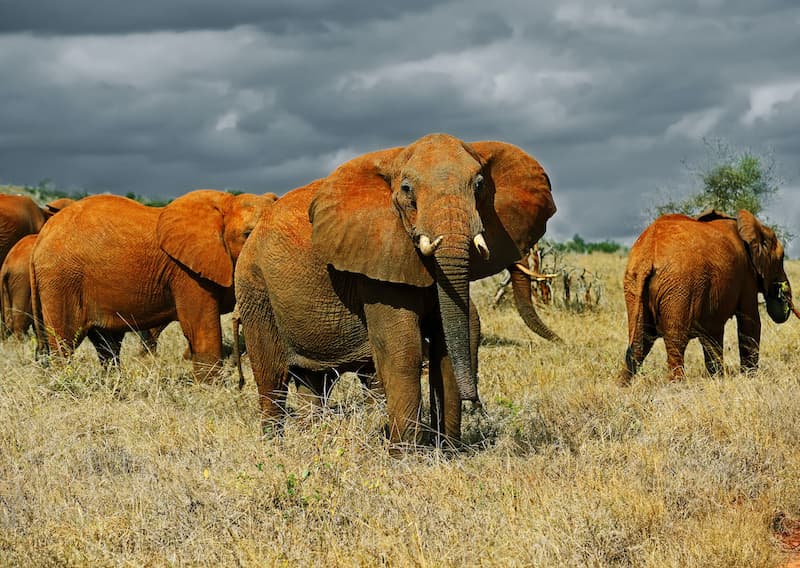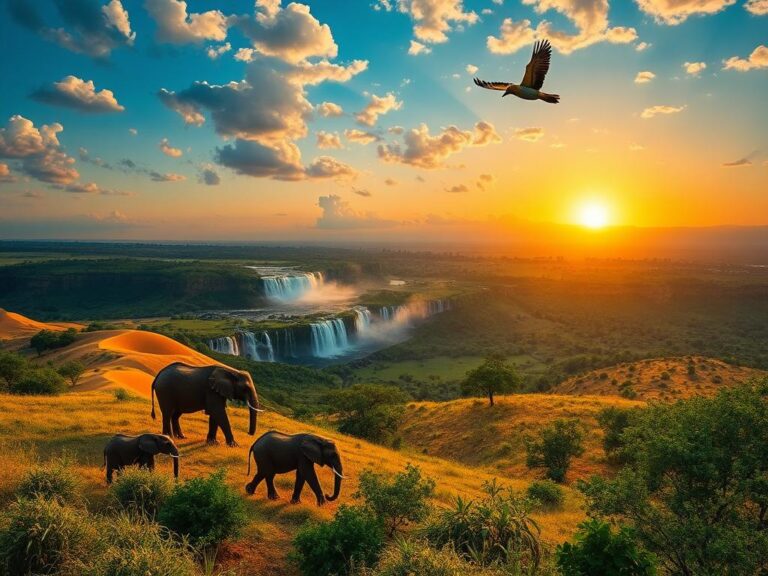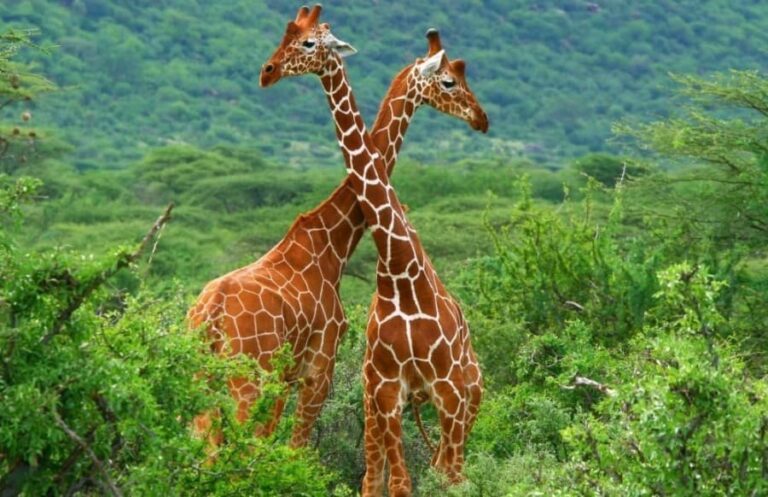
Discovering the Best Month for an African Safari: A Comprehensive Guide
Best month for African safari can immensely affect your experience, depending on the wildlife you want to see, the weather, and the overall atmosphere you seek during your adventure. Exploring the captivating landscapes and rich biodiversity of Africa’s national parks is often a once-in-a-lifetime experience for many. Understanding the intricacies of each month can maximize your safari, ensuring you witness the extraordinary wildlife behaviors, migration patterns, and stunning scenery. What follows is a detailed guide to each month, outlining the unique advantages and characteristics that can help you determine when to embark on your African safari. Let’s take you on this exhilarating journey through Africa!
A Deep Dive into the Best Months for an African Safari
January is a beautiful month to begin your journey through Africa. It marks the start of the green season, where the landscapes are lush, and a burst of vibrant flora revitalizes the ecosystem.
Birdwatchers will find this moment exhilarating, as migratory birds return, creating a symphony of colors and sounds. Many parks, like Kruger National Park, have abundant wildlife sightings during this time, thanks to the verdant surroundings.
One important note: January can witness sporadic rainfall, but that only enhances the experience as it brings life back to the savannahs.
A local guide once described January’s beauty succinctly, stating, “In January, every shade of green awakens under the African sun; it’s a dream for every wildlife lover.”
February: Calving Season in Serengeti
Moving on to February, this month is unique in its appeal as it marks the calving season in the Serengeti. Here, nearly half a million wildebeest calves are born, and witnessing this spectacle can be extraordinary.
Predators are also very active, waiting for opportunities to capture these vulnerable newborns. This creates a thrilling dynamic of survival among the safari landscape. This is the time to grab your camera and get ready for the action!
Additionally, with fewer tourists around, you’ll enjoy a more intimate experience in the parks. It is not uncommon to hear the faint rustle of a predator in the distance, while you sip on a hot cup of coffee, basking in the mystique of nature.
March: The End of the Rainy Season
March sees the end of the rainy season, offering a beautiful blend of lingering greenery and diminishing crowds. This is an excellent month for spotting predators hunting amidst a rich landscape.
As the waters recede, animals congregate around these dwindling sources, making it easier to spot various species. This time of year offers a balance between serene beauty and thrilling wildlife encounters.
“March is one of those hidden gems for safari-goers. You have the wildlife with a backdrop of lush greenery, with much less hustle and bustle,” said local wildlife experts.
April: Bonding with Nature
AsApril rolls in, it brings a serene quietness, making it a fantastic month for photographers looking to capture unique shots without the distractions of large crowds.
This is when flora begins to bloom spectacularly, offering spectacular photo opportunities, from floral close-ups to stunning landscapes.
For anyone seeking solace in nature coupled with stunning visuals, this period cannot be overstated. Just remember to carry sufficient rain gear since April can see increased rainfall.
May: The Transition Month
May is a transition month when wildlife becomes increasingly active as temperatures rise. This is the perfect time for game drives, as animals gear up for mating season across various parks.
With fewer tourists and many animals still out and about, this month offers excellent opportunities for wildlife sighting. The blend of abundant food and motivation for reproduction leads to rich animal interactions.
Local safari guides often emphasize that, “May is where you begin to see the emerging life of the African wilderness, and it’s the time to experience the excitement of the animal kingdom.”
June: The Start of the Dry Season
As June arrives, the dry season commences, bringing the promise of excellent game viewing opportunities. This is the time when animals congregate around water sources, making them easy to spot.
The bare landscapes accentuate the beauty of the animals as they gather near the rivers and waterholes, allowing for fantastic visual experiences.
With the scenic backdrop of golden savannah grasses and clear skies, this month can create unforgettable memories for wildlife enthusiasts and photographers alike.
July: The Great Migration Peaks
When July sweeps in, it unveils one of the most anticipated events in the wildlife calendar — the Great Migration peaks!
Wildebeests undertake their epic journey across the Serengeti, battling river crossings and predators alike. This thrilling spectacle is a must-see for any serious safari-goer.
Witnessing wildebeests leaping into the rivers, risking it all, offers an adrenaline-fueled experience that encapsulates the circle of life.
August: Wildlife Spectacles
August continues the momentum, delivering plenty of wildlife spectacles as animals engage in predator-prey interactions at their height.
During this time, it is not uncommon to witness lions hunting hyenas, or cheetahs sprinting for a meal, as the circle of life unfolds before your eyes. With the landscape still bare, sightlines remain unparalleled.
Enthusiasts note that the clarity and intensity of wildlife watching during this time are hard to beat, creating a riveting atmosphere.
September: The Perfect Weather Month
As the rainy season draws closer, September boasts clear skies and moderate temperatures, creating ideal safari conditions.”
This month holds some of the best potential for spotting elephants, lions, and a wealth of other species gathering near dwindling water sources. Wildlife photographers often rave about the ambient lighting that enhances their shots during this month.
October: The End of the Dry Season
October brings the dry season to a close, leading to thrilling wildlife sightings as animals wander towards the last water resources.
Game drives peak during this month, ensuring unforgettable wildlife encounters where animals are at their most visible.
November: The Begin of the Short Rains
As November sets in, a brief aptly named ‘short rains’ arrive, rejuvenating the environment while still keeping the wildlife active.
The blooming flora and vibrant wildlife activity highlight this month beautifully, combining an element of excitement with serene beauty.
December: The Festive Season
Finally, December is not just a festive month; it is also a unique time to experience the African wilderness. Animal activity is high with births being witnessed all around.
The atmosphere is lively, vibrant, and filled with both wildlife encounters and cheerful holiday spirit. This could be the perfect month if you’re looking for a blend of wildlife appreciation and festive joy.
Conclusion
In conclusion, determining the best month for an African safari ultimately depends on your interests, whether you desire to see the Great Migration or witness the serenity of the green season.
Each month presents its unique insight, beauty, and excitement, providing you with enriching experiences tailored to different wildlife and seasonal highlights.
Ultimately, whether you choose January with its vibrant ecosystems or December with its festive cheer, you are sure to create unforgettable memories while embracing the majestic wilderness of Africa. Happy safari planning!
FAQ
What month is the best for an African safari?
The best month for an African safari depends on personal preferences. January and February are great for birdwatching, while July to September is best for viewing the Great Migration.
Is it worth going on a safari during the rainy season?
Absolutely! The rainy season can be beautiful and offers fewer crowds. Wildlife can still be active, and landscapes are lush and vibrant.
What can I expect during an African safari?
Expect to see an array of wildlife, stunning landscapes, and possibly experience close encounters with various animals. Game drives and guided walks typically enrich the experience.
How much does a typical African safari cost?
Costs can vary widely based on location, accommodations, and time of year. Luxury safaris can run thousands per person, while budget-friendly options are available too.
Can I visit multiple countries during my safari?
Yes, many people opt for multi-country safaris to experience different wildlife and landscapes. Operators can tailor itineraries to your interests.
Feel free to share your thoughts, experiences, or questions about African safaris in the comments section below!


